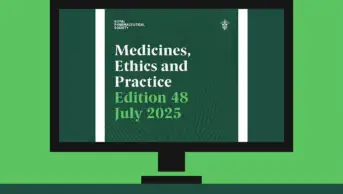
Shutterstock.com / JL
The launch of primary care networks (PCNs) is the latest to be hailed as the saviour of the health service in England. But the difference this time is that they are backed by some serious money.
NHS England will provide £4.5bn to fund these networks, which it says will deliver “more personalised, coordinated health and social care” in the community. Each area will have a PCN agreed by July 2019 and pharmacists will have an “essential role” within them: case finding; reviewing patients; and improving medicines use.
Most decisions on how pharmacy will be utilised within PCNs are yet to be decided, but here is a quick summary of what we know so far.
What are PCNs?
‘The NHS Long Term Plan’, published on 7 January 2019, detailed proposals on how it would invest £4.5bn in PCNs, which would comprise “expanded” multidisciplinary teams. These teams will be led by groups of local GP practices, coming together in areas covering 30,000—50,000 patients. A total of 20,000 new positions, including an expanded pharmacist workforce, and partly funded by government cash, are expected to be created to staff the new networks by 2023/24. PCNs are expected to be up and running across England from 1 July 2019.
How will pharmacists be involved?
According to NHS England, PCN pharmacists will be prescribers who “will take responsibility for the care management of patients with chronic diseases and undertake clinical medicine reviews to proactively manage people with complex polypharmacy”.
They will also improve medicines safety, reduce inappropriate antibiotic use and provide care home residents with regular medicines reviews.
PCN pharmacists will be expected to undertake an 18-month training programme, in which they will undergo a learning needs assessment with their education supervisor. The pharmacist will be expected to undertake their learning and development in the PCN as well as through courses.
NHS England adds that PCN pharmacists will support “further integration of general practice with the wider healthcare teams (including community and hospital pharmacy) to help improve patient outcomes, ensure better access to healthcare and help manage general practice workload”.
Each PCN will receive dedicated NHS funding for one full-time equivalent pharmacist, worth £37,810 in 2019/2020, which is designed to cover 70% of the cost, although if the PCN covers a population of 100,000 or more then it will be able to get funding for 2 pharmacists. However, this will change from 2020/2021, as PCNs will just receive a lump sum for workforce, giving them the flexibility to spend it as they choose.
In its ‘Five-year framework for GP contract reform to implement The NHS Long Term Plan’, published on 31 January 2019, NHS England said: “This could mean, for example, that in 2020/21, one network chooses to employ more physician associates, but fewer clinical pharmacists.”
Other roles funded by NHS England will include social prescribing link workers, physician associates, physiotherapists and community paramedics.
How will PCN pharmacists be employed?
Pharmacists can be employed by a PCN in a number of ways, depending on how the PCN is set up. For example, a lead GP practice within the network could employ the pharmacist, but allow him/her to work at other GP practices. A pharmacist could also hold a contract that specifies they are employed by the network as a whole, or if the PCN is set up through a limited liability company, a pharmacist might be employed through that.
In the minutes for its quarterly meeting in February 2019, the Pharmaceutical Services Negotiating Committee (PSNC) said that it is “working with the NHS on a pilot to model how clinical pharmacists working in PCNs could be employed by community pharmacy contractors”.
Will there be enough pharmacists for each PCN?
This has been an area of increasing concern for leaders in the pharmacy sector and beyond — especially after the British Medical Association said in
guidance that, by 2023/24, each PCN could have as many as six whole-time equivalent clinical pharmacists.
In February 2019, the Company Chemists’ Association (CCA) said that this would amount to thousands more pharmacists being required, which it said “doesn’t marry” with current recruitment trends.
Malcolm Harrison, chief executive of the CCA, added that a “growing shortage of pharmacists” is already creating “hotspots in England where it is proving challenging to get pharmacists to cover shifts” in community pharmacy.
Meanwhile,
Helen Stokes-Lampard, chair of the Royal College of General Practitioners, said that GPs had been “led to believe that there was an oversupply of pharmacists”.
“For the first time, I’m hearing pushback from people saying we don’t have an oversupply and I don’t know what the truth is,” she added.
Important dates
8 January 2019 — NHS England’s ‘Long Term Plan’ published
31 January 2019 — Five-year GP contract between BMA and NHS England published
15 May 2019 — PCNs register with their clinical commissioning group (CCG)
By 31 May 2019 — CCGs confirm the geographical coverage of PCN
1 July 2019 — PCNs go live across 100% of the country
By 30 September 2019 — Pharmacists working under the original scheme must transfer to new PCN scheme for funding to be reimbursed
Where does this leave existing GP pharmacists?
From 30 April 2019, NHS England’s ‘Clinical pharmacists in general practice scheme’, which started in 2016, will be mothballed and subsumed into the contracts held by PCNs. This means that practices that had applied to have a GP pharmacist before 31 March 2019 and had either not received approval from NHS England or had not yet appointed a pharmacist, would no longer be able to do so.
GP pharmacists already working as part of the scheme before 31 March 2019 are able to transfer and the PCN is then able to claim the 70% funding if they make the transfer before 30 September 2019. Alternatively, NHS England has said GP pharmacists can remain on the scheme, but practices will have to eventually cover their employment costs themselves.
What about community pharmacists?
Keith Ridge, chief pharmaceutical officer at NHS England, said in its January 2019 pharmacy and medicines bulletin: “As community pharmacy focuses more on the minor illness aspects of urgent care, and supporting patients to prevent ill health, it will need to have strong links with PCN clinical pharmacists and pharmacy technicians.”
Quite what this means is unclear, but the PSNC has said that if a community pharmacy does choose to join its local PCN, NHS England is expecting community pharmacists to provide integrated urgent care services, such as the NHS Urgent Medicine Supply Advanced Service (NUMSAS) and the Digital Minor Illness Referral Service (DMIRS).
While the PCNs themselves will be commissioned through their local CCGs, the commissioning of additional services from community pharmacy is “likely to be reflected in discussion on changes to the community pharmacy contract in 2019/2020”, the PSNC said, which are ongoing. However, the exact role of community pharmacy will likely differ between each PCN, because they can agree their own local priorities, such as around improving medicines use reviews, new medicines services and electronic repeat dispensing services.
The PSNC has also suggested local pharmaceutical committees appoint a “lead” community pharmacist to act as a liaison between the clinical lead of a PCN and the local community pharmacy sector.
What happens next?
NHS England will begin funding the PCNs from 1 July 2019, at which time they will receive the money to hire a pharmacist. It clarified: “Funding will be released from 1 July 2019 onwards on an actual salary claims basis up to the maximum amount, at the point networks can demonstrate that the additional staff have been recruited.”
Key quotes
Matt Hancock, health and social care secretary: “This government has given the NHS the multi-billion pound investment needed to nurture and safeguard our nation’s health service for generations to come.”
Keith Ridge, chief pharmaceutical officer at NHS England: “This is full of fantastic opportunities for pharmacy professionals working together across all sectors.”
Sandra Gidley, chair of the Royal Pharmaceutical Society English Pharmacy Board: “This opens doors to new ways of providing care that involve pharmacists across the NHS, including community and hospital colleagues.”
Malcolm Harrison, chief executive of the Company Chemists’ Association: “There are up to 2,000 pharmacists currently in the GP pharmacist and care home pharmacist schemes that are funded, but it still leaves quite a big gap.”
Simon Dukes, chief executive of the Pharmaceutical Services Negotiating Committee: “We must find ways to ensure that community pharmacy is at the heart of the developing local plans.”
Further reading


